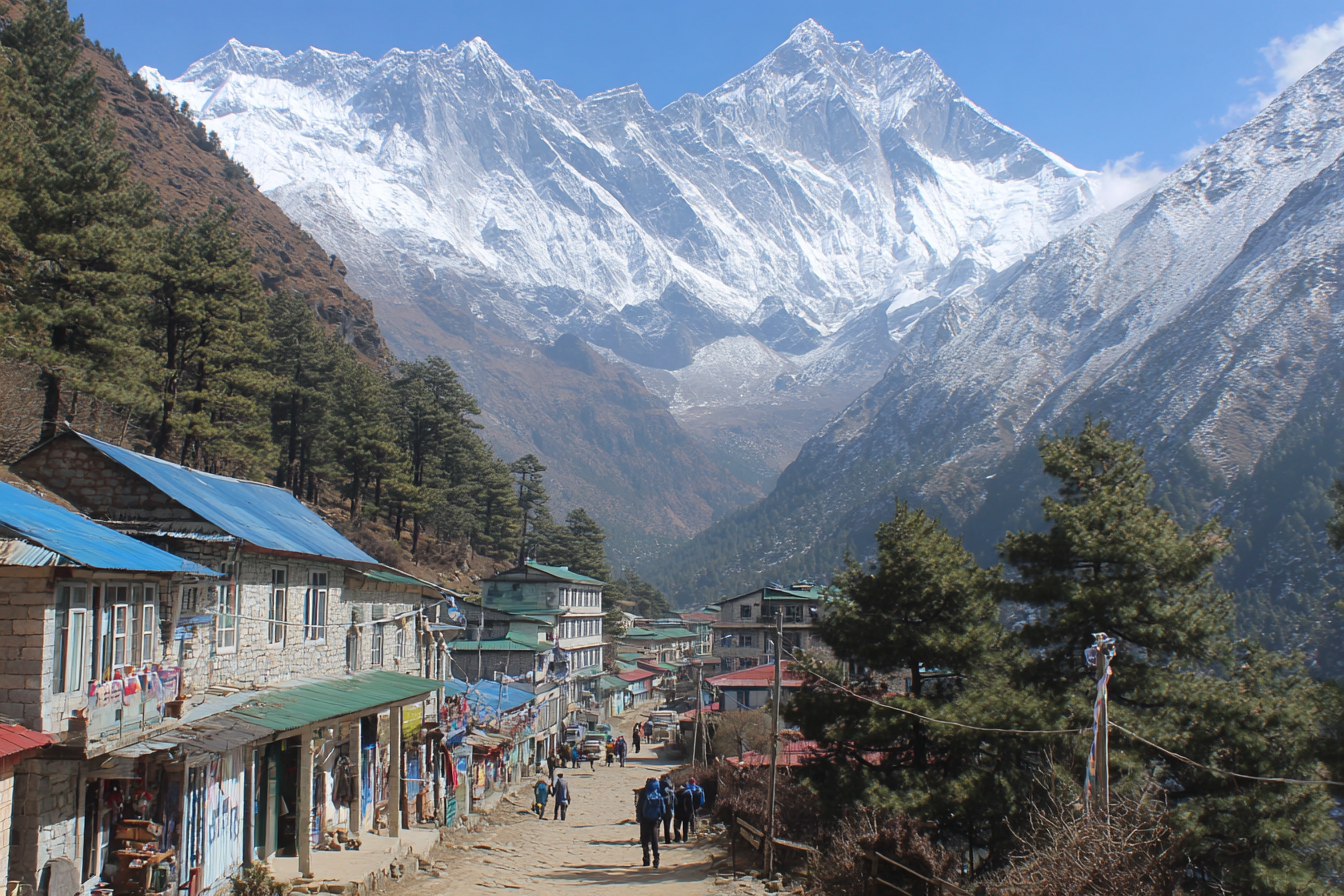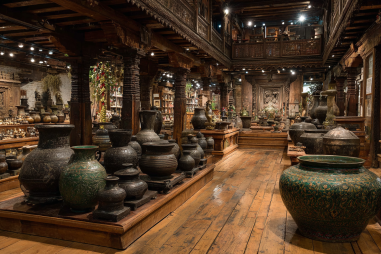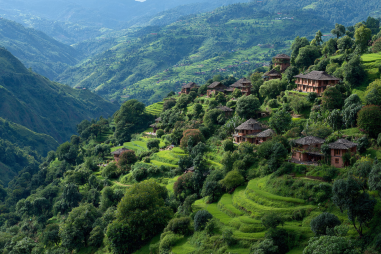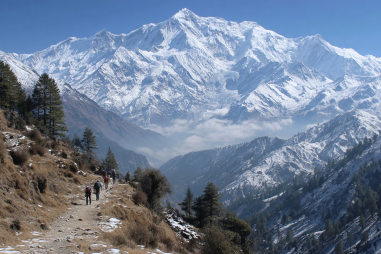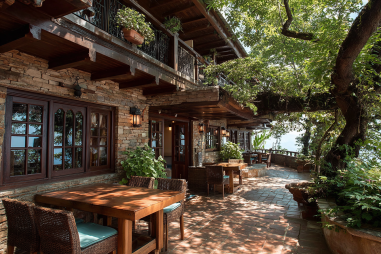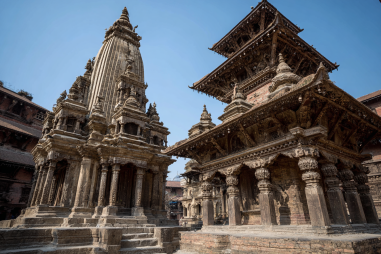Embarking on a trek to Namche Bazaar offers a captivating journey into the heart of the Himalayas, providing stunning mountain vistas, a vibrant Sherpa culture, and an exhilarating trekking experience. This guide is designed to equip you with essential tips, route options, and local insights, ensuring your adventure is both safe and unforgettable.
Introduction to Trekking Namche Bazaar
Namche Bazaar is often described as the gateway to the high Himalayas and is one of the most popular stops on treks heading towards Everest Base Camp. Situated at an altitude of approximately 3,440 meters (11,286 feet), Namche Bazaar serves as a bustling mountain town where trekkers can acclimatize, stock up on supplies, and immerse themselves in local culture. It’s renowned for its colorful markets, authentic Sherpa hospitality, and panoramic views of some of the world’s highest peaks, including Mount Everest, Lhotse, and Ama Dablam.
Best Time to Trek Namche Bazaar
The optimal months for trekking to Namche Bazaar are primarily in the spring (March to May) and autumn (late September to November) seasons. During these periods, weather conditions are generally stable, providing clear skies and moderate temperatures which are ideal for hiking and mountain views.
Spring offers blossoming rhododendrons and vibrant flora, while autumn provides crisp, clear air and spectacular sunset colors. Winter can be very cold and snowy, limiting accessibility and increasing risk, whereas the summer monsoon season (June to August) presents heavy rainfall and potential landslides, making trekking more challenging and risky.
Route Options and Trekking Difficulty
There are several routes to reach Namche Bazaar, often depending on your starting point and overall itinerary:
- Lukla to Namche Bazaar: The most popular route, starting from the Lukla Airport. This trek takes about 2 days to reach Namche, crossing suspension bridges and ascending steep trails with spectacular landscape views.
- Jiri to Namche Bazaar: A longer and more traditional approach, taking about 7 to 8 days to reach Namche. This route is less crowded and offers a gradual acclimatization process.
- Phakding to Namche Bazaar: A shorter segment for those who start trekking from Phakding, which lies on the Lukla route.
The difficulty of trekking to Namche Bazaar is considered moderate due to the rocky and steep ascents along the way. It is important to be physically prepared, as the altitude can challenge even experienced hikers.
Acclimatization Tips for High Altitude
Since Namche Bazaar is situated at a high altitude, proper acclimatization is crucial to avoid altitude sickness. Here are some effective tips:
- Ascend slowly. Avoid rapid elevation gain and take breaks as needed.
- Spend at least one full day acclimatizing at Namche Bazaar to allow your body to adjust before continuing your trek.
- Stay hydrated by drinking plenty of water throughout the day.
- Avoid alcohol and smoking, as they can exacerbate altitude-related symptoms.
- Recognize symptoms of altitude sickness such as headaches, nausea, and dizziness and seek medical help if they persist or worsen.
Many trekkers also carry medications like Diamox after consulting a healthcare professional, which can help prevent altitude sickness.
What to Pack for Trekking Namche Bazaar
Packing smartly will enhance your comfort and safety on the trek. Essentials include:
- Clothing: Layered clothing is key. Bring moisture-wicking base layers, insulating mid-layers (like fleece or down jackets), and a waterproof, windproof outer shell.
- Footwear: Durable, waterproof hiking boots with good ankle support and suitable trekking socks to prevent blisters.
- Gear: A comfortable daypack, trekking poles for stability, headlamp with extra batteries, sleeping bag rated for cold temperatures, and sunglasses to protect eyes from UV rays and glare.
- Health and Safety: Sunscreen, lip balm with SPF, personal medications, basic first aid kit, and water purification tablets or filters.
- Miscellaneous: Camera or smartphone for capturing stunning views, power banks for device charging, and snacks for energy.
Travelers should also consider waterproof dry bags to keep belongings safe from rain or snow.
Local Culture and Attractions in Namche Bazaar
Namche Bazaar is vibrant with Sherpa culture and tradition, making it a highlight beyond just trekking. Key attractions and cultural experiences include:
- Local Markets: Explore the bustling bazaar where traders sell goods ranging from fresh produce to handmade crafts, trekking equipment, and souvenirs.
- Himalayan Sherpa Museum: A fascinating museum exhibiting Sherpa history, mountaineering artifacts, and cultural heritage.
- Namche Viewpoints: Several vantage points around town offer breathtaking views of the surrounding valleys and massive Himalayan peaks.
- Monasteries and Temples: Visitors can experience peaceful moments and learn about local religious practices by visiting Buddhist monasteries.
Interacting with the friendly Sherpa people adds a personal and enriching dimension to the trekking experience.
Safety and Health Considerations
Safety is paramount on any Himalayan trek. Here are key considerations to keep in mind:
- Altitude Awareness: Monitor your body’s response to elevation and do not push through symptoms of altitude sickness.
- Weather Preparedness: Mountain weather can change rapidly. Carry suitable gear to stay warm and dry.
- Guidance and Permits: Ensure you have all necessary permits, including the Sagarmatha National Park permit and TIMS (Trekkers’ Information Management System) card.
- Emergency Plans: Know the locations of nearby clinics and have a plan for emergency evacuation if necessary.
- Travel Insurance: Obtain comprehensive travel insurance that covers high-altitude trekking and potential helicopter evacuations.
Remaining cautious and prepared will greatly reduce risks and keep your trek enjoyable.
Recommended Guides and Tours
While it is possible to trek independently, many trekkers opt for guided tours for added safety, local knowledge, and convenience. Reputable trekking companies offer packages that include experienced guides, porters, accommodation arrangements, and logistics management.
When choosing a guide or tour operator:
- Look for certified guides with good reviews and proper permits.
- Consider companies that prioritize sustainable tourism and fair treatment of porters and staff.
- Ask about the group size and itinerary flexibility.
- Ensure the company has a good track record for safety and customer support.
A knowledgeable guide not only enhances safety but also enriches your experience by sharing insights on the environment, culture, and history of the region.
Final Tips for an Unforgettable Trek
Preparing for a trek to Namche Bazaar requires thoughtful planning and respect for the mountain environment. Here are a few final suggestions to keep in mind:
- Listen to your body and pace yourself to avoid exhaustion.
- Respect local customs and be mindful of your environmental impact.
- Stay connected with fellow trekkers and guides, as companionship can boost morale on the trail.
- Keep a journal or take photos to capture your remarkable journey.
- Enjoy the moment — the unique blend of natural beauty and cultural richness in Namche Bazaar is something to treasure forever.
Whether you’re a seasoned trekker or a first-time visitor to the Himalayas, following these tips will enhance your adventure and help you create memories that last a lifetime.

